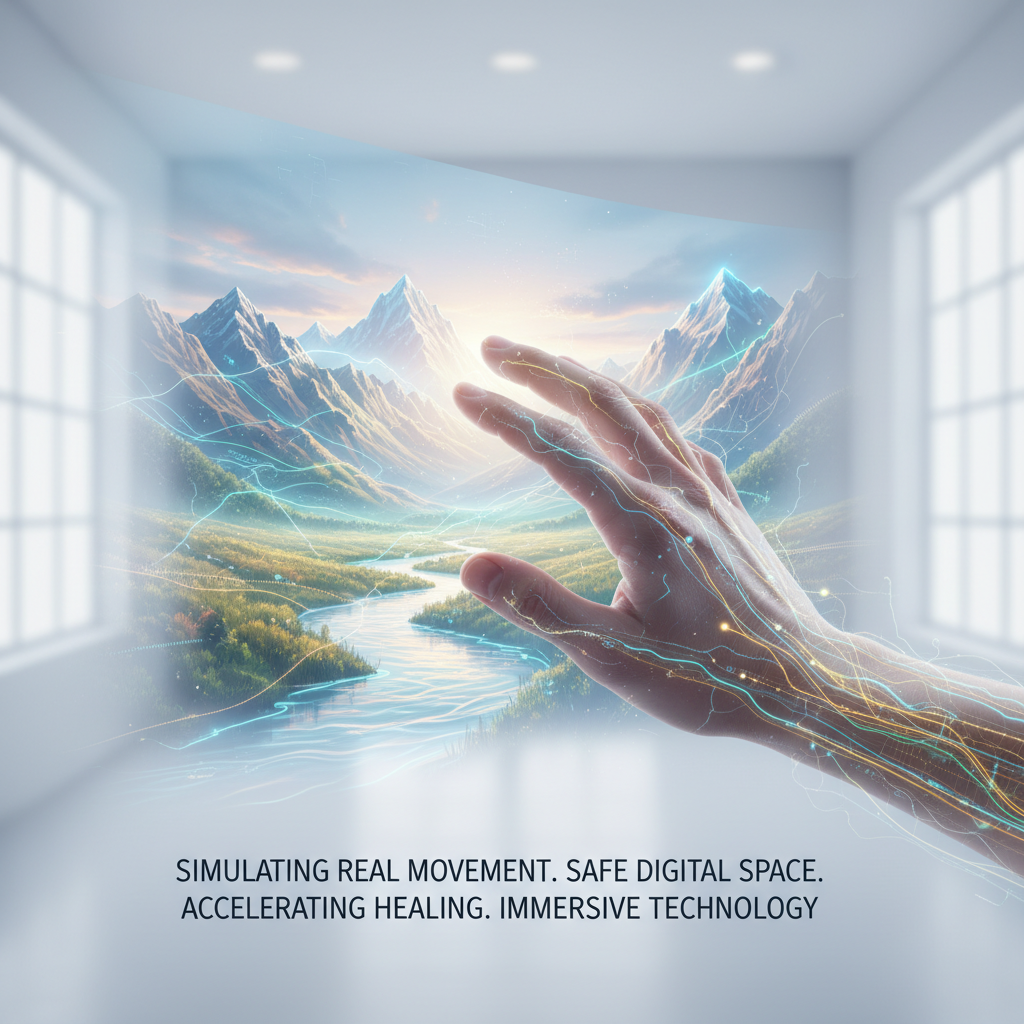Have you ever considered the profound impact a simple shift in perspective, enabled by technology, could have on something as deeply personal as recovering from surgery? For years, I've championed the intersection of innovation, leadership, and human-centric design in technology. But it wasn't until a personal encounter with post-surgical rehabilitation - after undergoing knee and ankle surgery - that I truly grasped the transformative potential of Virtual Reality (VR) in redefining human recovery.
My journey through recovery revealed the physical discomfort and psychological toll that traditional rehabilitation can entail. It was then I realized: what if we could immerse patients in a safe, engaging digital world that not only distracts from pain but actively guides them through therapeutic movements, making the healing process faster, more effective, and even enjoyable? This isn't science fiction; it's the burgeoning reality of VR therapy, a powerful bridge between technology and human recovery that promises to redefine medical training, patient care, and rehabilitation globally.
The VR Advantage: Beyond Pain Management to Holistic Healing
The most immediate benefit of VR in post-surgery recovery is its remarkable ability to reduce pain. By immersing patients in captivating virtual environments, VR diverts their attention from discomfort, activating areas of the brain that process visual and auditory stimuli, effectively reducing pain perception. This isn't a mere placebo; studies across the U.S., Europe, and Australia are consistently demonstrating its efficacy, often reducing the need for opioid painkillers, a critical advantage in today's healthcare landscape.
But VR's impact extends far beyond pain relief. It fosters a holistic healing environment. For patients in India, facing long recovery periods, or those in the Middle East seeking advanced care, VR offers a psychological escape, combating anxiety and depression often associated with prolonged immobility and recovery. It transforms a sterile clinical environment into a personalized sanctuary, encouraging active participation and fostering a positive mindset crucial for accelerated healing.
Sandeep Mundra's Insight: My Personal Brush with Recovery
When I went through my own knee and ankle surgeries, the reality of recovery hit home. The repetitive nature of physical therapy, the persistent discomfort, and the mental drain were significant. I remember thinking, 'If only there was a way to make these crucial, repetitive movements engaging, almost like a game.' The sheer monotony often made compliance a challenge, even for someone as disciplined as myself. This personal experience amplified my conviction that technology, specifically immersive VR, holds the key to revolutionizing this space. Imagine turning painful exercises into an adventurous quest, where every successful movement contributes to progress in a virtual world. This isn't just about pain management; it's about transforming the entire patient experience, driving adherence, and ultimately, accelerating recovery with purpose.
Redefining Rehabilitation: Simulation for Accelerated Mobility
One of VR's most significant contributions lies in its ability to simulate real-world movements and scenarios within a safe, controlled digital space. For someone recovering from a knee or ankle operation, regaining mobility is paramount. VR therapy allows patients to practice walking, balancing, and performing daily tasks without the fear of falling or reinjury. Imagine navigating a virtual grocery store aisle or climbing a digital mountain trail, all from the safety of a therapy room.
This immersive simulation is a game-changer for physical and occupational therapy. Therapists can customize virtual environments and exercises to target specific muscle groups and movement patterns, collecting real-time data on patient performance. This data-driven approach, essential for building scalable and structured systems, enables precise adjustments to treatment plans, optimizing outcomes. It's about building a repeatable, effective pathway to recovery, something that resonates with my philosophy of scalable innovation.

"The future of innovation isn't just about creating new tools; it's about seamlessly integrating them into existing workflows to unlock unprecedented efficiencies and elevate the human experience. Whether in automotive or healthcare, the adoption challenge lies in cultural transformation as much as technological prowess."
- VP of Innovation at a leading Canadian Automotive Supplier
A Global Paradigm Shift: Opportunities Across Continents
The promise of VR in healthcare isn't confined to a single geography; it's a global imperative. In the United States and Europe, robust healthcare infrastructures are increasingly integrating VR for pain management, stroke rehabilitation, and even mental health. The UK's NHS is exploring VR for various therapeutic applications, demonstrating a progressive embrace of digital health.
Emerging markets like India, with its vast population and growing demand for accessible, high-quality healthcare, present immense opportunities for scalable VR solutions. Affordable VR headsets and localized content can democratize access to advanced rehabilitation, particularly in remote areas. Similarly, the Middle East, investing heavily in smart city initiatives and technological advancement, is ripe for adopting VR as a cornerstone of its futuristic healthcare ecosystems. Australia, with its focus on remote patient monitoring, could leverage VR for home-based rehabilitation, extending care beyond clinical walls.
The Path Forward: Leadership, Investment, and Scalability
As a tech entrepreneur, I see not just medical potential, but a significant market opportunity and a call for visionary leadership. Implementing VR therapy at scale requires strategic investment in infrastructure, content development, and workforce training. Hospitals and rehabilitation centers need to integrate VR systems seamlessly into their existing patient care pathways, ensuring ease of use for both patients and clinicians.
Crucially, it demands leadership that understands the long-term ROI - not just in reduced pain medication costs, but in faster patient recovery times, increased patient satisfaction, and enhanced clinical efficiency. We need to move beyond pilot projects to create structured, repeatable systems that allow VR solutions to be deployed broadly and effectively, driving measurable outcomes and fostering a culture of continuous innovation.
Why did the VR headset go to therapy? It had too much virtual reality and not enough actual reality!
Conclusion: Bridging Technology with Human Recovery, Globally
The integration of Virtual Reality into post-surgery recovery is more than a technological advancement; it's a paradigm shift towards a more empathetic, effective, and engaging patient journey. My personal experience cemented my belief that immersive technology can profoundly impact human well-being, transforming challenging recovery paths into opportunities for accelerated healing and improved quality of life.
As leaders in technology and healthcare, our mandate is clear: to embrace these innovations, invest wisely, and build scalable systems that bridge the gap between human recovery and technological capability. From Mumbai to Manchester, Dubai to Dallas, the potential for VR to redefine medical training, patient care, and rehabilitation is immense. Let's lead with vision, implement with purpose, and empower countless individuals to heal better, faster, and with renewed hope.










